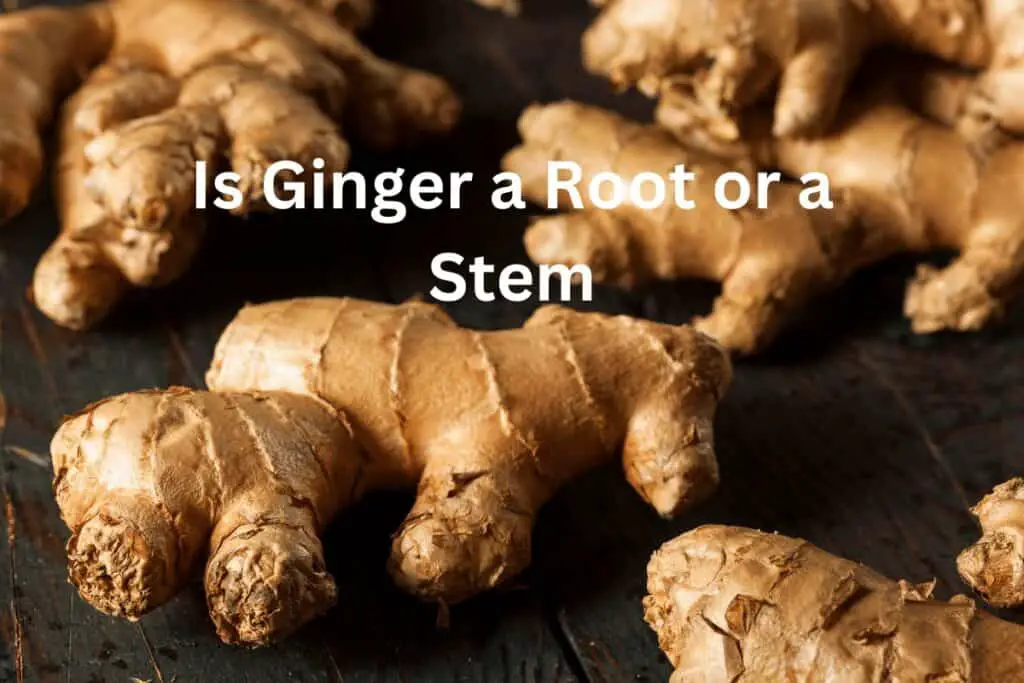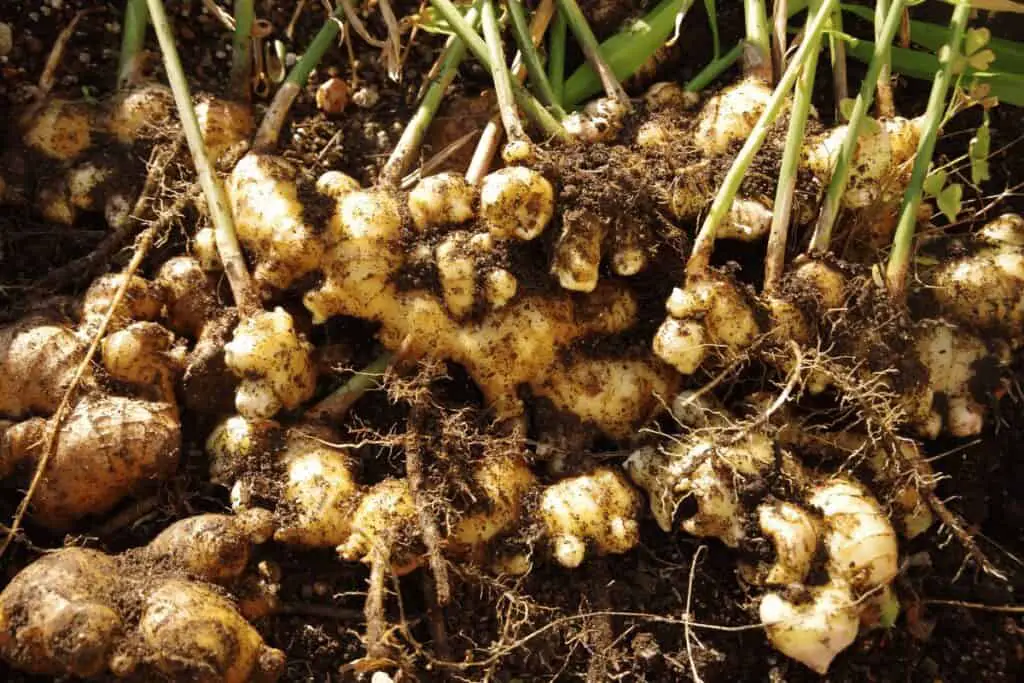Is Ginger a Root or Stem?
Quick Answer
Is Ginger a Root or Stem? Ginger is a rhizome, which is a modified plant stem that grows underground. It is often referred to as ginger root or ginger, but it is not a true root. The rhizome of the ginger plant is part of the plant that is used for both culinary and medicinal purposes. The rhizome stores food created by the plant material and grows horizontally in the soil, which is one of the defining features of a rhizome
In this article, What Is Ginger A Root Or Stem?” we will explore the answer to this question using information from various sources
Ginger is a well-known spice used in many culinary dishes around the world. Its distinct flavor and aroma have made it a popular ingredient, but confusion still surrounds its classification. Some people wonder if is ginger a root or a stem.
What is Ginger?

Ginger is a flowering plant known by its scientific name Zingiber officinale. It belongs to the Zingiberaceae family and is native to southeastern Asia. Ginger has been used for centuries in traditional medicine and as a culinary spice.
Root or Stem?
Ginger is a rhizome, which is a modified plant stem that grows underground. It is often referred to as ginger root or ginger, but it is not a true root. The rhizome of the ginger plant is part of the plant that is used for both culinary and medicinal purposes. The rhizome stores food created by the plant material and grows horizontally in the soil, which is one of the defining features of a rhizome [[3](https://planyourpatch.com/what-is-ginger-a-root-or-stem/)].
The Anatomy of Ginger
Ginger has an unusual anatomy as compared to other plants. The underground stem or rhizome is the primary part of the plant, which grows horizontally in the soil. From the rhizome, roots grow downwards and the shoots grow upwards [[2](https://www.britannica.com/plant/ginger)]. The shoots develop into leafy stems, which can reach up to one meter in height. The stems have false stems made of the rolled bases of leaves, which are called pseudostems. The narrow leaf blades grow from these pseudostems [[1](https://en.wikipedia.org/wiki/Ginger)].
Uses of Ginger
Ginger has been used for centuries in traditional medicine and as a culinary spice. The rhizome of the ginger plant is used in various forms such as fresh, dried, powdered, or as an oil or juice. It is used as a flavoring agent, food preservative, and in many traditional medicines. Ginger is known for its anti-inflammatory, antioxidant, and antimicrobial properties [[3](https://planyourpatch.com/what-is-ginger-a-root-or-stem/)]. Some of the common uses of ginger include:
- Relieving nausea and vomiting
- Reducing inflammation and pain
- Lowering cholesterol levels
- Improving digestion
- Boosting the immune system
How is Ginger Differentiated from a Root?

Ginger is differentiated from a root because it has nodes and internodes, which roots lack. While ginger root is a member of the family of roots consisting of turmeric and cardamom, it is still considered a stem. In fact, there are over 1300 different species of ginger root plants [2].
What are the Characteristics of a Stem?
Stems have several characteristics that differentiate them from roots, such as:
Nodes and Internodes
Stems have nodes and internodes, which are important for the transportation of water and nutrients throughout the plant.
Leaves and Buds
Stems also have leaves and buds, which are essential for photosynthesis and reproduction.
Orientation
Stems grow upwards or outwards from the plant, while roots grow downwards into the soil.
How is Ginger Used?
Ginger is a versatile spice that is used in a variety of ways. Some common uses of ginger include:
Cooking
Ginger is commonly used in cooking to add flavor to dishes. It can be used fresh, dried, or powdered.
Medicinal Purposes
Ginger has been used for centuries for its medicinal properties. It is often used to treat nausea, vomiting, and other digestive issues. Ginger is also used to treat inflammation and pain.
Beauty Products
Ginger is also used in beauty products such as lotions and shampoos. It is believed to have anti-inflammatory properties that can help soothe the skin and scalp.
Frequently Asked Questions (FAQs)
Q. Can ginger be grown at home?
A. Yes, ginger can be grown at home in a pot or in the ground. The plant requires warm, moist soil, and indirect sunlight.
Q. Is ginger safe to consume during pregnancy?
A. Ginger is considered safe to consume during pregnancy, but it is always best to consult a healthcare professional before consuming any new food or medication during pregnancy.
Q. Can ginger cause any side effects?
Yes, ginger can cause some mild side effects, as reported by various sources, including [1, 2, 3]. These side effects include heartburn, upset stomach, mouth irritation, gas, burping, diarrhea, and general stomach discomfort. However, these effects are usually mild and do not require medical attention.
Excessive consumption of ginger can lead to skin and eye allergies and increase the risk of bleeding in some people, especially those who are on blood-thinning medications. Therefore, it is advisable to consult a doctor before consuming ginger supplements if you are taking blood-thinning medications or have a bleeding disorder.
Q: Can ginger be grown at home?
Yes, ginger can be grown at home. All you need is a piece of ginger root and a pot of soil. Simply plant the ginger in the soil and water it regularly.
Conclusion for What Is Ginger a Root or Stem?
it can be concluded that ginger is actually a stem, more specifically, a rhizome [1][2][3]. Although it is commonly referred to as “ginger root,” it is not a true root because it has nodes and internodes and grows horizontally [2]. The rhizome stores food created by the plant material and is able to transport stored nutrients to above-ground shoots and roots, allowing them to develop and support additional growth [1]. Therefore, ginger should be classified as a stem or a rhizome rather than a root.




